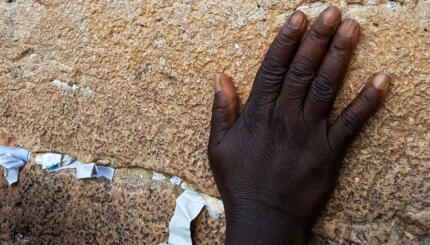Excerpted with permission from Lifecycles Vol. 1: Jewish Women on Life Passages & Personal Milestones (Jewish Lights Publishing).
Traditional religious ritual was designed, and continues, to meet a variety of needs that relate to life passages: the need for the individual to be acknowledged by community; the need for the community/tribe to read itself into the passages of each member; the need for bonding, which serves both individual and community; the need to (re-)enact dramatically the great stories and messages of the tradition, for the sake of individuals and of the tradition. Through rituals, we create structures that provide an element of predictability and, therefore, safety, around times of insecurity, transition, and/or loss.
Ritual has been popularized and secularized in the last few years. At the same time, there has been a flowering of ritual-writing in religious contexts as well. The impetus for this among Jews came originally from grass roots. It was women waking up to how they lived who created a cottage industry of ritual writing in Rosh Chodesh (New Moon Festival) groups and elsewhere.
Many of those who have been marking their lives idiosyncratically and often privately have come to want the authentic stamp of something ancient and communal. There has been a breakdown in our society both of predictable life markers and of community. Now, almost in a backlash, we sometimes want even the most personal passage–and perhaps especially that one–to be acknowledged and witnessed.
Contemporary Jewish women have had a particular need for and connection with ritual. We have needed not only to re-enact but to integrate our myths–the feminist/woman’s "story" with the Jewish "story." This is often accomplished by creating and participating in rituals that take account of women as Jews, express women’s perspectives on life passages, and feminize a formerly patriarchal symbolic system.
Many women, and especially feminists, feel a deep harmony with the whole ritual enterprise. The women’s movement has worked to achieve some of the same ends that ritual serves: namely, to rely on and build community, while providing support and opportunities for self-expression to individuals in transition. Perhaps it should not be surprising, then, that both feminism and creative ritual have been ways "in" to Judaism for many women.
Rituals are "created" in at least three ways: by recovering traditions that have fallen into disuse (such as those Dr. Lori Lefkovitz cites in her essay on childbirth); by using an existing rite or blessing in a new context (as Rabbi Sandy Eisenberg Sasso does in her blessing following miscarriage); or by drawing on traditional texts, symbols, images, and ritual objects to create an entirely new composition (as Rabbi Nina Beth Cardin does in her ritual for marital separation). The first two methods renew the old creatively, while the last creates the new authentically. Thus, they fulfill Rav Kuk’s intention that the old be made new, and the new, made holy.
Invention can entail a struggle with the old. It might also mean simply finding new meanings, spaces, and places in a rich and highly interpretive and interpretable tradition. Jewish books of commentary, prayer, and lore, unlike the Bible and Talmud, were never sealed. Generating new ritual, liturgical, and midrashic material has always been permitted–and even lauded. Vekhol hamarbeh harei zeh meshubach: Whoever tells the Jewish story moreso, we learn at the Passover seder (ordered readings and meal), their telling is surely to be praised…
Some argue that ritual is debased by attaching it to relatively trivial events, such as losing a job, or completing a creative project. Triviality, like much else, is in the eye of the beholder. It might seem "trivial" to say a blessing for smelling ripe fruit, but the tradition supplies one.
More important than notions of subjectivity or relativity, however, is the social assessment of familiarity. In contemporary Western culture, familiarity commonly does breed contempt. What is most available and most used is considered least interesting and essential. This contrasts sharply with the traditional Jewish emphasis on sanctifying the everyday, and with the recent focus on ritual.
Still and all, there are times, during this period of the flowering and popularization of ritual, when one cringes either at the occasion being ritualized or at the character of the ritual. I used to be judgmental of that, but I have come to see it as part of our communal creative and learning process. In any case, it is a relatively small price to pay for the benefit of an expanded tradition that, by its willingness to address the lives of Jews as they are lived, remains both relevant and viable. The "price" is also temporary: In the end, rituals that speak to the needs of the Jewish community will last, and those that do not will fall into disuse.


